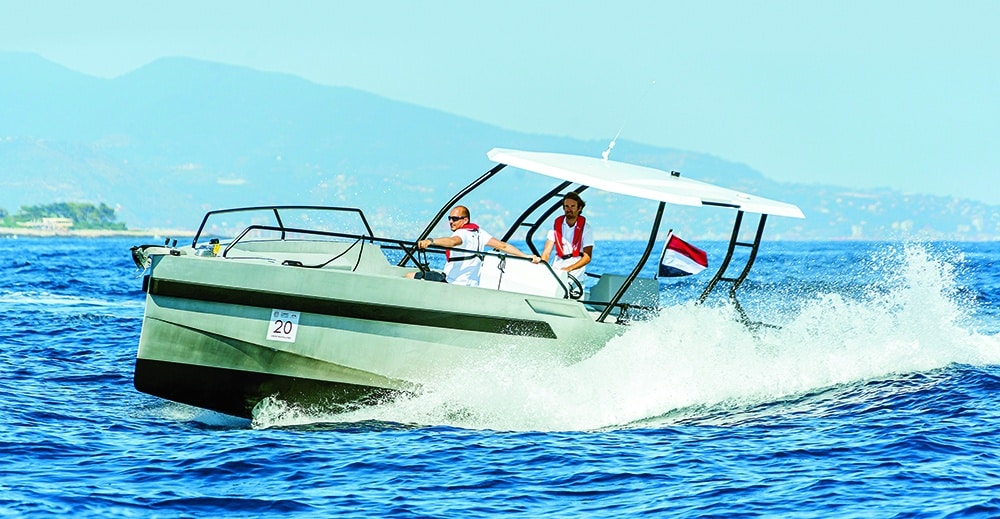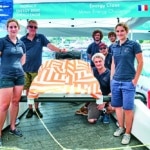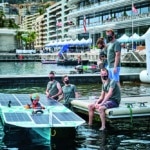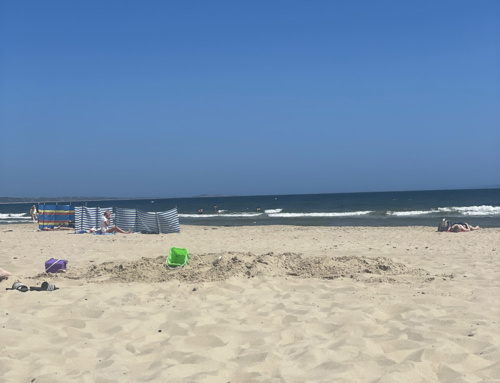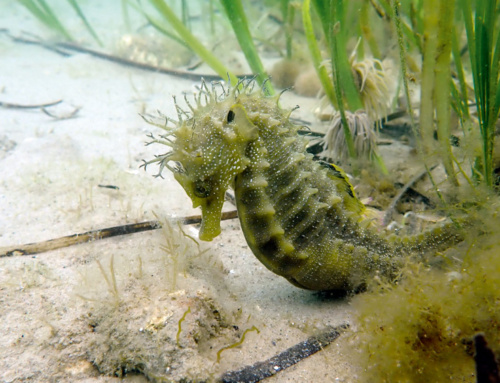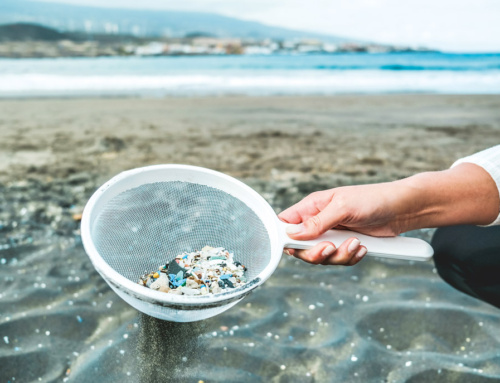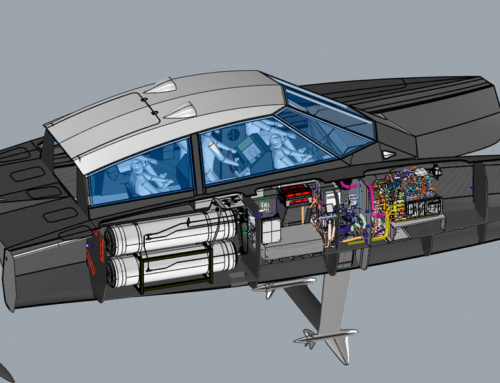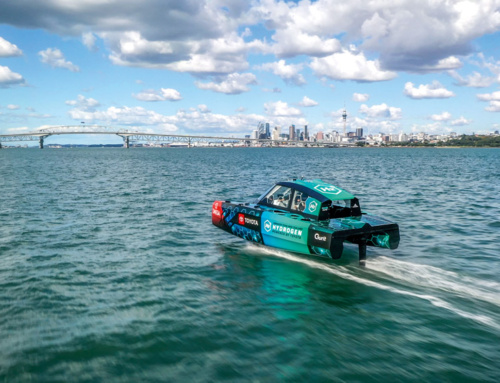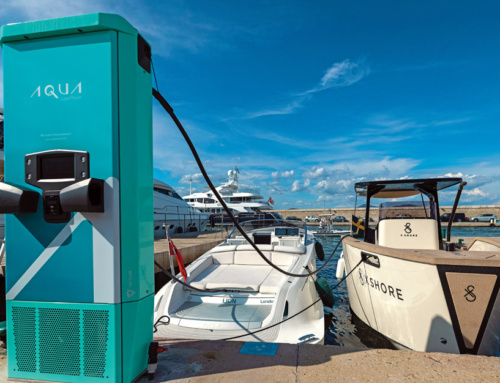A total of 32 teams from 17 countries in three different classes recently gathered before the watchful eye of HSH Prince Albert II, President of the Yacht Club de Monaco, to pit their respective, sustainable wits against each other in the 2021 Monaco Energy Boat Challenge. PBR takes up the story …
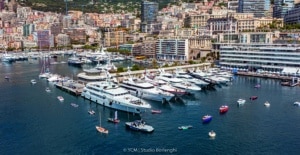
Sunny Monaco ©Carlo Borlenghi
Over the course of a week, the prestigious Yacht Club de Monaco (YCM) morphed into an academic and entrepreneurial crossroads to conduct discussions and a raft of experiments, and to gain an insight into tomorrow’s renewable energy technologies. This was the occasion of the Eighth Monaco Energy Boat Challenge, organised in partnership with the International Powerboating Federation (UIM) and Prince Albert II of Monaco Foundation, and which also benefited from the support of IQOS, Credit Suisse, Yachting Partners International (YPI), BMW and SBM Offshore.
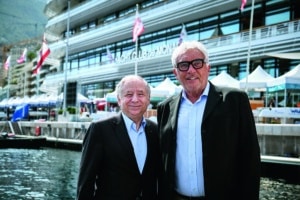
The President of the FIA (Fédération Internationale de l’Automobile), Jean Todt and explorer Mike Horn
The 32 teams, representing 17 nations in the Solar, Energy and Open Sea classes, that came together in front of HSH Prince Albert II were also closely monitored by well-known and key figures such as the explorer Mike Horn and the President of the FIA (Fédération Internationale de l’Automobile), Jean Todt. Throughout the week, Quai Louis II buzzed with activity, both on shore and at sea, generated by a host of initiatives and innovations from 22 universities worldwide, plus 20 or more companies and start-ups, who were all present to showcase their latest sustainable propulsion systems. Round tables and a conference, Tech Talks, as well as an exhibition ashore played their part too, while not forgetting, of course, the all-important trials at sea as the teams competed in Monte-Carlo Bay. This gathering of know-how formed the focal point of discussions on green yachting-, boating- and shipping-related issues along with the quest to find sustainable resource-efficient solutions that show greater respect for the environment.
Intense but friendly
For the 32 teams, there were plenty of opportunities to put their boats through their paces on the sea in contests organised over the three days and visible from the sun-kissed main harbour wall. A parade, sea trials, speed record, fleet race, 16-nautical mile race round marks on a Monaco–Ventimiglia–Monaco course, endurance laps, manoeuvrability challenges and a slalom event made for an all-encompassing programme for competitors from Italy, France, the Netherlands, Monaco, Portugal, Greece, Germany, Sweden, Switzerland, Hungary, Croatia, Poland and the United Arab Emirates, while other teams from China, Peru, South Africa and Indonesia had to participate online due to travel restrictions but were still able to present their projects at Tech Talks.
All pushed their sporting and intellectual resources to the limit in a bid to win one of the prizes. These were decided by a jury of international experts and included the speed record won by Candela in the Open Sea Class, the Innovation Prize awarded to both FinX for their biomimicry propulsion system designed like the fin of a fish and Permare/Amer Yachts for their composite developed with Bologna University from a natural resin combined with Filava basalt fibre, and the performances of the UniBoat (Italy) team, hands-down winners in the Energy Class, the Sunflare Solar team (Netherlands) in the Solar Class and the Hynova team (France), who were the overall Open Sea Class winners.
The format
In the Energy Class introduced by the YCM in 2018, which supplies each team with the same hull design, the challenge for students, working with industry partners, is to design the most powerful and durable propulsion system using a clean energy source of their choice from a given quantity of energy. A variety of innovations have been pursued since its launch, ranging from fuel cells to recovering heat to improve efficiency, and artificial intelligence. They then test these innovations for real in Monte-Carlo Bay, through a challenge that combines manoeuvrability, speed and endurance.
- Mines Energy Challenge – France – Energy Class – They used hydrogen as an energy vector, kept technology features simple and recycled and reused as much as possible, with the goal of developing an evolving platform that could be used for research and education activities over 5 years.
- Han Solar Boat – Netherlands – Solar Class – A monohull of 5,7 meters flying above waters with three foils.
Boats in the Solar Class are involved in match racing, slalom and endurance races. Unlike the Energy Class, these participants are free to design and build their own hull. As their one constraint is to power the vessel with solar energy alone, the challenge is to design a hull with maximum efficiency, minimum weight and, of course, as many solar panels as possible. In short, it is all about finding the perfect balance to maximise both boat and energy performance.
The Open Sea Class, formerly known as the Offshore Class, is mainly open to vessels already on the market or about to enter it and includes a coastal race to Ventimiglia in Italy from Monaco and back – a distance of 16 nautical miles (29.6km). An endurance race is also organised to test the boats’ range. It is a real test for green-energy-propelled boats.
Winners all!
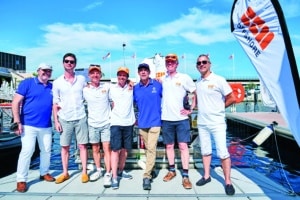
SBM Offshore E-Racing – Monaco – Energy Class
In the Energy Class, which is growing in number every year as it allows for the more innovative and diverse powertrain concepts, this year’s resounding winner was the UniBoAT team. UniBo, which stands for University of Bologna, has participated for many years in the FSAE competition in which groups of students each build a racing car that competes with those from universities all over the world. As an initiative to expand learning by carrying out projects led by students outside of the automotive world, UniBoAT (UniBo Argonauts Tea) was set up in December 2019. A hybrid hydrogen/electric powertrain was the basis for the UniBoAT project, the aim being to put students’ skills into practice through eco-sustainable challenges and add high-efficiency solar panels to draw down extra green energy during the race.
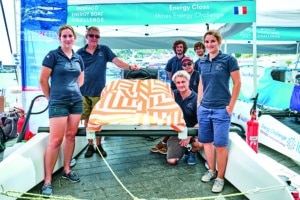
Mines Energy Challenge – France – Energy Class – They used hydrogen as an energy vector, kept technology features simple and recycled and reused as much as possible, with the goal of developing an evolving platform that could be used for research and education activities over 5 years.
Initially, only a few PhD students started the preliminary powertrain analysis, but as ideas became clearer and the project started to take shape, more graduates from other engineering sectors, including mechanical, electrical, energy, control and automation, got involved. The team worked on the design and build of a boat with an electric motor powered by a high-efficiency battery, a hydrogen fuel cell and photovoltaic panels. Self-built electrical components such as DC/DC converters and motor inverters were used to reach a more tailored solution and increase performance and efficiency. From the construction standpoint, reusing a racing car frame presented a weight challenge, being made mainly of steel tubes, but a process to lighten the load was evaluated and modifications were carried out. The key characteristics of the winning boat are:
- 2kW PEM fuel cell coupled with a 9L 200-bar hydrogen tank
- Self-built li-ion battery pack custom design casing and BMS
- Monocrystalline PV panels with custom MPPT self-designed mechanism for instant panel orientation adjustment
- Torqeedo motor with custom-built inverter for increased power delivery and greater electrical efficiency
- Self-developed control strategy for real-time energy management and power demand control
- Reutilisation of an FSAE race car frame for construction of the cockpit
In the Solar Class, there was fierce competition among most of the participants, and the results were always very close. While Sunflare (Netherlands) was the overall winner, the Swiss Solar team from EPFL proved another worthy competitor, as both teams built on their experience in previous years to keep optimising all components, from the most efficient displacement hull shape to in-house powertrain design or integration of foils into the hulls. Over the years they had also worked on all the internal electronic components, switching from standard industrial to lightweight in-house-designed components to improve efficiency and weight.
An interesting point about Sunflare is that they operate as a private team that was set up in 2015 and now has eight members. Although there have been a few changes within the team structure, as some students have now embarked on their careers, most of the original members are still active. In fact, some members landed their jobs thanks to their solar boat expertise. One of the most notable achievements by the Sunflare team was the addition of hydrofoils in 2020, which enabled the boat to ‘fly early’ and reach speeds of up to 50km/h, a move that proved its worth in the 2021 Challenge and helped them snatch top spot overall.
In 2021, a major decision was made by another long-standing Challenge participant, the Swiss Solar team, to break with existing designs and develop a boat based on a prao – an asymmetrical Polynesian concept combining speed and lightness in the form of a traditional sailboat. With foils and a structure comprising fine-fold carbon and linen fibres to fuse performance with a low ecological footprint combined with flight control, it proved that it is possible to achieve excellent stability and high speed.
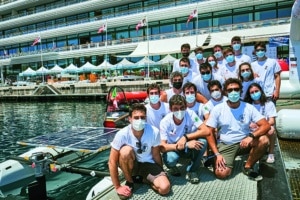
Uniboat – Argonauts Team – Italy – Energy Class – The main idea of the project was to incorporate a hydrogen/electric powertrain that until now has never been explored by the university and add high efficiency solar panels as a means to gather extra green energy during the race.
In the Open Sea Class, the overall winner was the Hynova team. Awarded the Coup de Coeur Prize last year when the Challenge was only virtual, the new French yard, based in La Ciotat, designed a 12m tender/dayboat using a combination of three 44kWh LifePo batteries and a 60kW hydrogen-powered fuel cell to extend its range. With its technological partner EODev, who developed the Range Extender Hydrogen RExH2 solution and a power management system that jointly operates the fuel cell and batteries, Hynova demonstrated the versatility of a solution that provides excellent performance when aiming for a higher speed, and endurance when the aim is for a longer range at slower speeds.
The idea is quite simple, as Hynova Yachts’ Founder and CEO Chloe Zaied explained. A couple of years ago, she was looking for an electric boat equipped with batteries that could provide her with the range and speed, without emissions, needed for her job of bringing visitors to the protected Parc National de Calanques marine area near Cassis. But she could not find anything on the market. The number of batteries required for the trip, their weight, volume and total cost made it impossible to consider this as an option. She realised that the only effective solution would be to bring hydrogen into the mix. Inspired by the Energy Observer odyssey, she turned to EODev to help her build the first approved recreational vessel powered by hydrogen – the very prototype that won this class in the 2021 Monaco Energy Boat Challenge and is now ready to go into production.
Foils and hydrogen
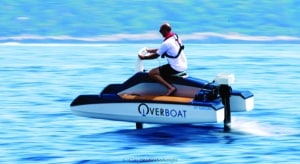
The exhibitor Neocean and its Overboat
Foils are proving to be a major development adopted by a number of these experimental boats. The technology has been around for some years, from early experiments on the Hydroptère to the latest America’s Cup and Vendée Globe IMOCA race boats, such as Boris Herrmann’s YCM-supported Malizia II, and the way they are used on these prototypes keeps on improving, thanks not least to increased computer calculation power, simulation and CFD. The result is that these futuristic powerboats can ‘fly early’ thanks to sets of hydrofoils and reduced blade sizes that combine to create improved lightweight hull designs and reduced drag.
Also using foils at the 2021 Monaco Energy Boat Challenge were the Tecnico Solar Boat SR03 (Portugal) in the Solar Class and Candela C-7 (Sweden) in the Open Sea Class.
Of particular interest from the Portuguese team, which won the Communication Prize, was a hull designed to fit a T-set of hydrofoils with a bigger propulsion column to allow for a closed-circuit cooling system, combined with double helix propulsion for high speed that enabled them to reduce the size of the blades.
For Candela, the Challenge was all about proving their boat’s seaworthiness. Having clearly demonstrated their C-7’s capabilities on lakes, the team was eager to see if it would perform as well on choppy seas off Monaco. Sometimes there can be important differences between what has been calculated with a computer and real-life experience! But in this instance the end result not only proved the calculation’s relevance but also the solution’s validity: the C-7 was easily able to fly from speeds of 8 knots and cruise in comfort over small waves at high speed. Although Candela did not win the Challenge this year, mostly due to a limited range, it is clear that increased power storage capabilities would make this team a strong contender for victory in the future.
This is where hydrogen comes into the picture. Looking back at the Hynova Yachts prototype, considering the range limitations of solar- and/or only battery-powered boats, even when optimised with efficient hull designs and the use of foils, the question is: will the use of hydrogen to store energy become the key and prove the best forward-thinking alternative for clean propulsion in boating and yachting? Although there can be no definitive answer to a question that often generates further questions and more debates, the 2021 Monaco Energy Boat Challenge clearly showed that this is a path worth following.
In short, the ‘Challenge’ for every powerboat is the same: how to combine in the most efficient way possible the need for stability and comfort at sea with reduced drag (to limit resistance and avoid increased energy consumption), low weight, high speed and long range – and all this in varying sea conditions and changing operational profiles. Could the dream of a boat capable of meeting all these requirements be turned into a reality?
Of the six teams that used hydrogen for the Challenge, it is possible that the answer lies with Hydro Motion, an initiative developed by the renowned TU Delft University. A group of 20 ambitious students from eight different study backgrounds, they put their studies on hold for the entire year to design and build a hydrogen-powered boat to enter the Open Sea Class.
Instead of focusing on generating renewable energy, as they did in the past with their solar boats, in 2021 these students decided to switch to using hydrogen as an option for sustainable energy storage. Their answer to the Challenge was a trimaran using hydrofoils with a height control system that adjusts the angle of the blades to fly for extensive periods of time. As they developed this efficient hull and foiling solution using a hydrogen fuel cell for extended range and lighter weight, their ‘all solutions combined’ prototype was eagerly awaited.
Unfortunately, despite all the support the project received in the Netherlands from numerous industry and financial partners, the prototype did not meet expectations this year. Some technical failures after the first manoeuvrability challenge meant it could not take part in the other races. However, as the only limit here is the horizon, there is little doubt that this innovative approach will make waves, and the Yacht Club de Monaco, along with all the yachting companies that support research and development, are eager to see what progress will be made and showcased at next year’s edition.
Next year
The dates for the Ninth Monaco Energy Boat Challenge are 5th–9th July 2022.
Contact
Challenge results can be seen at: https://bit.ly/3Cg6Nwp
